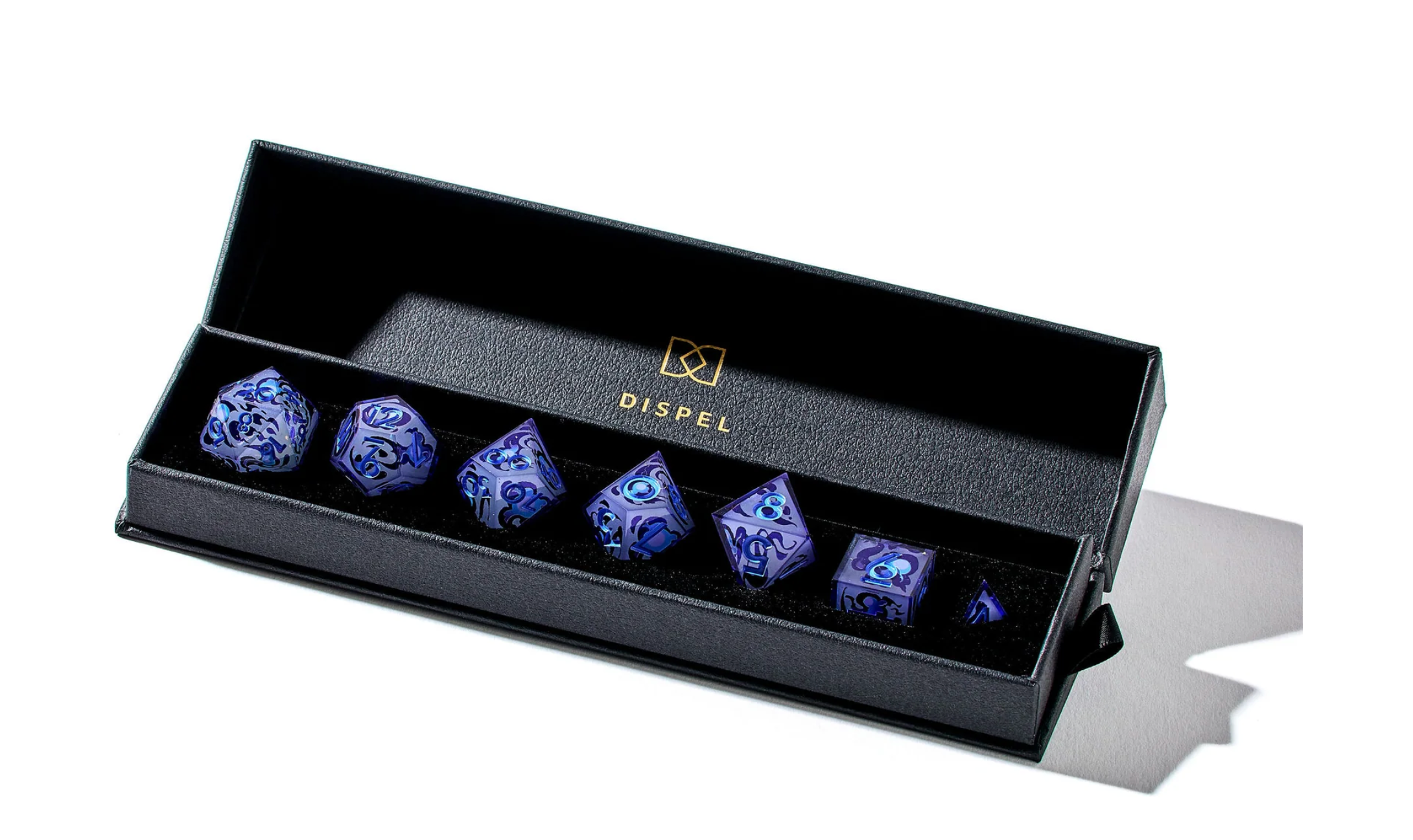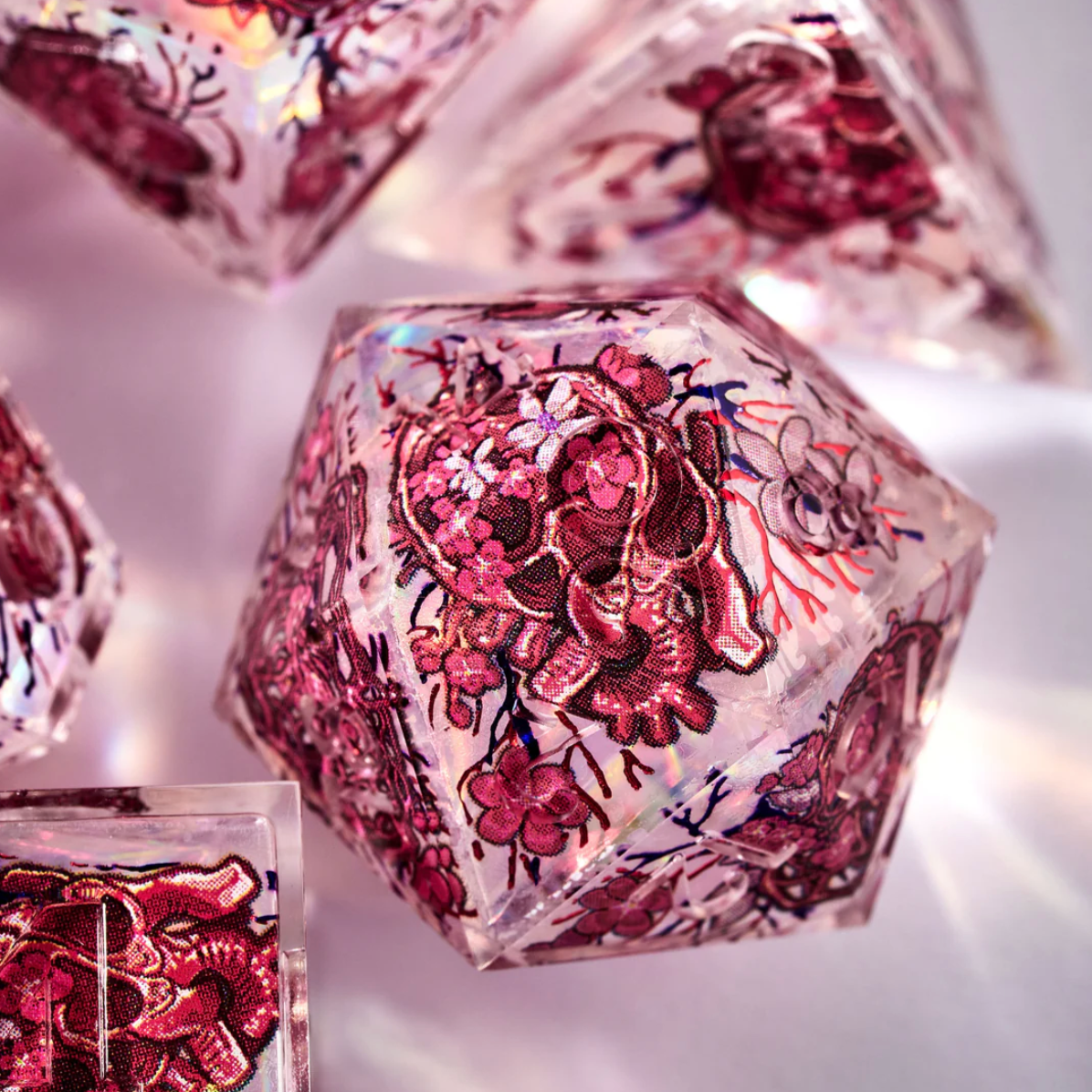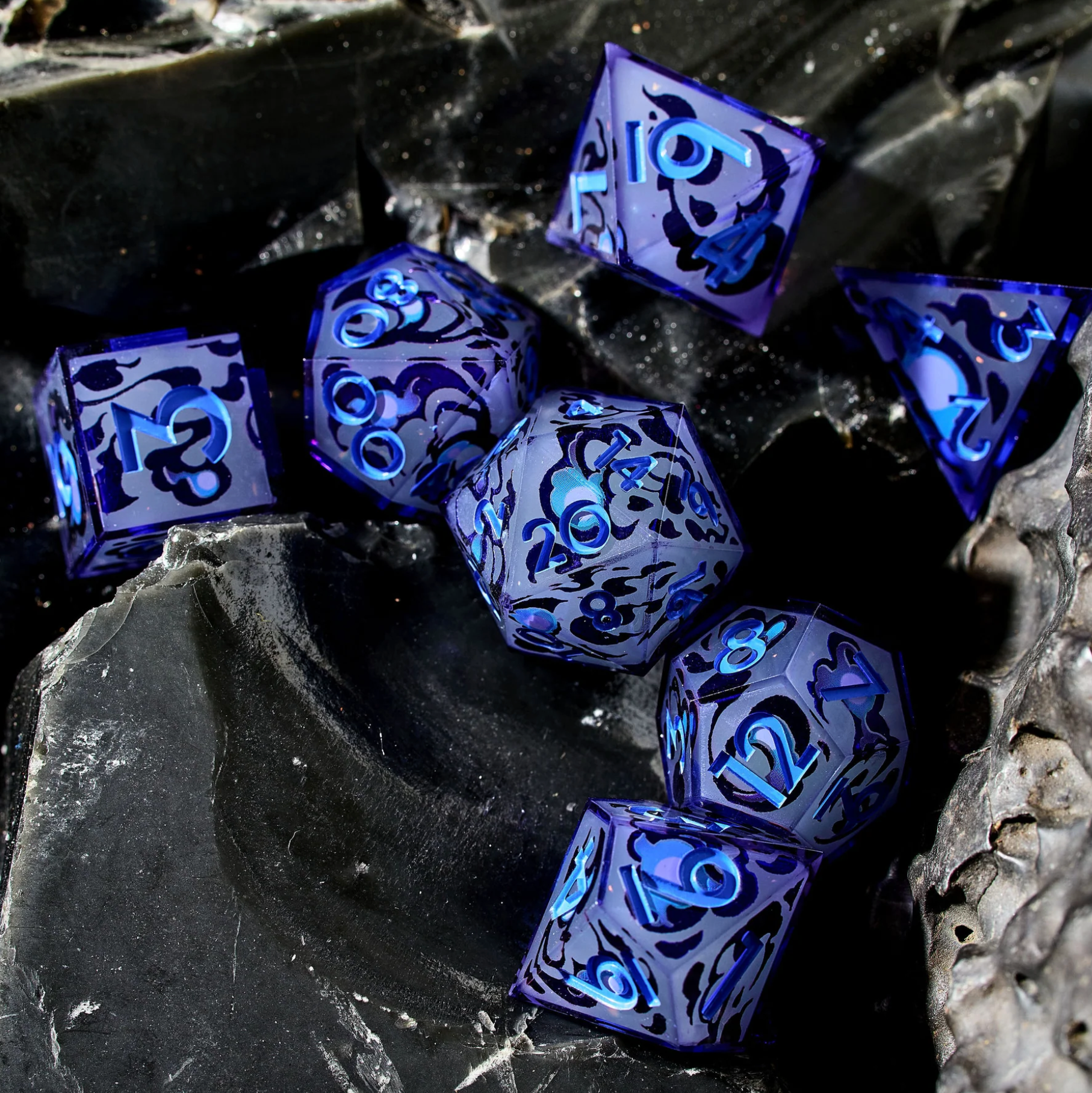
Dungeons and Dragons dice for beginners
Dungeons and Dragons, and other roleplaying games like it, are continuing to gain popularity. After making its way back to mainstream attention thanks to the likes of The Big Bang Theory and Stranger Things, more and more people have been open to giving D&D a try. Before they start playing, most people want to know why there are so many dice. If you’re new to the hobby and have been wondering the same thing, or if you’re a DM and looking for a refresher for your players, this quick guide to Dungeons and Dragons dice for beginners is the perfect place to start.
What is Dungeons & Dragons?
D&D is a tabletop roleplaying game (or TTRPG), which basically means that it’s a board game with improvised roleplaying. A Dungeon Master, your DM, will prepare a story outline in advance. They will then guide players through creating their characters. You will move through the story as a team, creatively solving problems and completing quests on their collaborative story telling adventures.
So where does all the dice rolling come in?
Well, if everyone just got everything they said they wanted, it wouldn’t be much of a game! Challenging strategy comes from rolling dice. You roll dice to find out if your chosen action is possible, to determine how much damage you do in fights, and what kind of loot you discover on your way. You will even roll dice to help build your character and their skills.
Dice mechanics not only make gameplay more challenging, but also more fun. When things literally don’t roll your way, you and your friends will need to get creative to reach your goals, increase your stats, and get out of sticky situations.
What dice are used to play Dungeons & Dragons?
In your typical game of D&D, you would play with a set of seven dice. This is why you will always see matching dice sold in sets of seven. Each set includes one D20, D12, D8, D6 and D4, as well as two D10s.
Your rulebook, cards, or DM will tell you which dice to roll as you move through each game, but their uses are pretty well standardized with the world of D&D.
Let’s dive in:
D20 - The Icosahedron 
Frazetta x Dispel "Grey Wizard" 95mm Iconic Liquid Core D20
You literally cannot play D&D without it! Your 20-sided dice determines the success of your actions and the outcomes of your decisions. Here are the three most common ways you’ll use your D20 in D&D:
1. Roll for initiative - This roll determines the order of attack during combat. Each player will roll a D20, and then the DM will roll for each enemy. Whoever (player or monster) rolls the highest gets to attack first, followed by the rest of the party in descending order. You ideally want players to attack first, and hope that the monsters don’t get too many turns in a row.
2. Skill checks - You need to roll a D20 for any decisions you make that have the chance for failure. This goes for everything from opening doors to attacking your opponents. If you want to throw something at your friend’s character for fun, you need to roll for it.
3. Saving throws - Similarly to skill checks, saving throws are used when you attempt to avoid something being done to you by another player or monster. If you’re the friend above, you could roll a D20 to dodge whatever item was thrown at you.
Each side on a D20 has a 5% chance of showing up. Your rulebook or DM will tell you what you need to roll to be successful in any particular action. Rolling a 20 is always a super success, and rolling a 1 is always a critical failure. While they don’t happen often, critical failures often come with catastrophic consequences (and high entertainment value for everyone involved!).
D12 - The Dodecahedron
First Blush 7-Piece Polyhedral Dice Set
Mostly used by barbarians, if your character is using a large weapon or you find yourself in a melee, you’ll use a 12-sided die to determine how much damage each blow inflicts on your enemy. After rolling your D20 to find out when it will be your turn to attack, you’ll roll it again to find out if your blow hits your target. If you’re successful, you’ll roll your D12 to find out how much damage your attack did.
D12s are also used to determine spell damage for higher level characters.
D10 - The Pentagonal Trapezohedron
Midas Touch 7-Piece Polyhedral Dice Set
Your average 7-piece dice set will contain two ten-sided dice. One will be numbered from 0 to 9, and the other begins at 00 and increases in multiples of 10 all the way up to 90. You would typically roll these two dice together for a percentile roll. Add the two numbers together to get a score out of 100. Rolling all zeros means you have rolled 100.
The Weave 7-Piece Liquid Core Dice Set
These dice aren’t used as often as the others in Dungeons & Dragons, but when they do come into play, it’s usually to determine a particular outcome from a random table. Your rulebook will come with a selection of random tables that you can use along with your dice to generate locations, back stories, magical items, spells or anything else to make your story feel more immersive. You can even get books that are entirely made up of random tables you can use for adding inspiration and detail to your world.
These dice are almost always rolled by your DM to add flair to your adventure, but they can also be used by players to determine damage for martial weapon attacks.
D8 - The Octahedron
Lunar Cathedral 7-Piece Iconic Dice Set
Your eight-sided die is used to roll damage for one-handed martial weapons, as well as casting spells and cantrips (low-level spells that don’t use any resources to cast)
D6 - The Cube
Qinghua Iconic 7-Piece Dice Set
This is the dice you’ll find most familiar, as it’s the dice used in most standard board games. The D6 gets used in Dungeons & Dragons a lot, especially for character creation, or anything that requires quick rolls. When you’re rolling ability scores for your character, you would roll four D6s. You then discount the lowest number, and assign the rest to the character ability score of your choice.
There are also many weapons and spells that require you to roll more than once for the final outcome of your action. Rolling multiple dice at once can help save time, or can be used to increase damage at class-higher levels.
D4 - The Tetrahedron
Forbidden Gummy 7-Piece Matte Palette Dice Set
Your four-sided die has very flat faces, and doesn’t “roll” in the traditional sense of the word. It lands and comes to a stop very quickly. You would use this dice for any scenario where you don’t want much variation. They are most commonly used for healing spells and to determine the amount of damage inflicted by small weapons.
Since most D4s are shaped like pyramids, you might be wondering how it’s possible for them to land face-up. The truth is, they don’t. They will land with a pointy point facing up, and three sides on display. Your number is whichever one is the right way up when you look at it. The numbers on the other two sides will be upside-down or on their sides.
D&D Dice by Dispel
Dispel Dice has collaborated with some incredible D&D content creators, players, and game designers to create luxury Dungeons & Dragons 7-piece dice sets to inspire you to start playing.
Here’s what you can get your hands on right now!
Pointy Hat x Dispel Dice "Arcane Constellations" 7-Piece Iconic Dice Set










Leave a comment
This site is protected by hCaptcha and the hCaptcha Privacy Policy and Terms of Service apply.